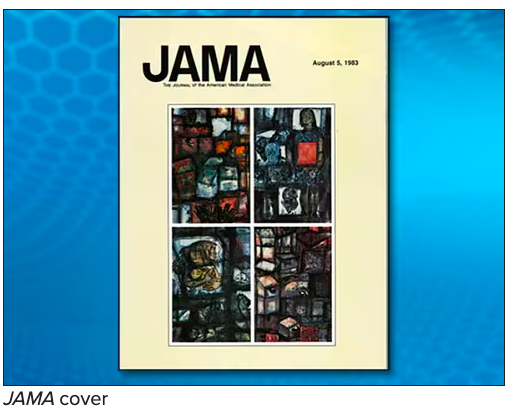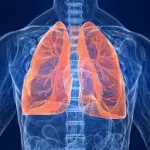
On August 6, 1945, the United States obliterated Hiroshima, Japan, using the first-ever atomic bomb employed in warfare. Three days later, on August 9, 1945, Nagasaki suffered a similar fate. The Hiroshima bombing effectively concluded World War II with Japan, while the Nagasaki incident resulted from miscommunication. Since then, no nuclear warfare event has occurred, largely due to the resounding message from health professionals: there exists no adequate medical response to nuclear war.
On August 5, 1983, the Journal of the American Medical Association (JAMA) published its inaugural Hiroshima-themed issue, which became an annual tradition for several years, focused on the prevention of nuclear war. This first edition included a firsthand account by Japanese author Dr. Taro Takemi, detailing how he diagnosed the atomic bomb’s impact and informed the emperor, leading to the war’s end.
The annual JAMA Hiroshima issue featured original artwork by the Marukis, who visited Hiroshima shortly after the explosion and depicted their observations. This artwork was discovered at their Tokyo gallery in 1983. Simultaneously, the International Physicians for the Prevention of Nuclear War, particularly its founders American cardiologist Bernard Lown and Russian cardiologist Yevgeniy Chazov, was honored with the Nobel Peace Prize in 1985 for their parallel efforts.
In August 2023, medical journal editors worldwide continue the collaborative tradition of extensive publication to safeguard the planet and its inhabitants. Just as freedom demands a price, peace must be earned. The global health community must insist that political leaders of all nations commit to preventing any occurrence of nuclear war.
Reducing the Risks of Nuclear War—The Role of Health Professionals Abbasi; Parveen Ali; Virginia Barbour; Kirsten Bibbins-Domingo; Marcel G.M. Olde Rikkert; Andy Haines; Ira Helfand; Richard Horton; Bob Mash; Arun Mitra; Carlos Monteiro; Elena N. Naumova; Eric J. Rubin; Tilman Ruff; Peush Sahni; James Tumwine; Paul Yonga; Chris Zielinski
In January 2023, the Bulletin of the Atomic Scientists’ Science and Security Board advanced the Doomsday Clock’s hands to 90 seconds before midnight, reflecting an escalating nuclear war risk. In August 2022, UN Secretary-General António Guterres warned of a level of nuclear peril not witnessed since the peak of the Cold War. Growing tensions among nuclear-armed states underscore this danger. As editors of global health and medical journals, we implore health professionals to inform both the public and leaders about this grave threat to public health and the fundamental life support systems of our world. We call for proactive measures to prevent it, as current nuclear arms control and nonproliferation endeavors are insufficient to shield humanity from the prospect of nuclear war arising from intention, error, or miscalculation.
The Treaty on the Non-Proliferation of Nuclear Weapons (NPT) commits its 190 participating nations to pursue measures for halting the nuclear arms race and achieving nuclear disarmament. Yet progress has been slow, with the most recent NPT review conference in 2022 concluding without a consensus. Numerous close calls have highlighted the dangers of relying on nuclear deterrence indefinitely. Modernizing nuclear arsenals, including hypersonic missiles, could heighten risks by diminishing the time available to differentiate between an attack and a false alarm, raising the potential for rapid escalation. The consequences of using nuclear weapons, even in a limited scenario, are catastrophic for humanity. The aftermath of a “limited” nuclear conflict involving a fraction of existing nuclear weapons could result in immense casualties, global climate disruption, and a nuclear famine endangering billions.
A large-scale nuclear war between major powers could lead to millions of near-term casualties and trigger a “nuclear winter,” potentially decimating billions of people and imperiling humanity’s survival. The swift escalation from a single detonation to all-out nuclear conflict underscores the urgency of preventing any use of nuclear weapons. The eradication of nuclear weapons is a critical step to address the root cause of this peril, and the health community’s historical involvement in reducing nuclear war risks must continue.
During the 1980s, health professionals, spearheaded by the International Physicians for the Prevention of Nuclear War (IPPNW), played a pivotal role in ending the Cold War arms race by enlightening policymakers and the public on both sides of the Iron Curtain about the medical consequences of nuclear war. This effort was acknowledged with the IPPNW’s receipt of the Nobel Peace Prize in 1985. Subsequently, in 2007, the IPPNW launched the International Campaign to Abolish Nuclear Weapons, a global civil society movement. This led to the adoption of the Treaty on the Prohibition of Nuclear Weapons in 2017, for which the campaign received the 2017 Nobel Peace Prize.
Prominent medical organizations, including the International Committee of the Red Cross, IPPNW, World Medical Association, World Federation of Public Health Associations, and International Council of Nurses, significantly contributed to this process, presenting scientific evidence on the dire health and environmental consequences of nuclear weapons and war. This collaboration continued during the First Meeting of the States Parties to the Treaty on the Prohibition of Nuclear Weapons, which boasts 92 signatories, including 68 member states.
We now urge health professional associations globally to educate their members about the threat to human survival and join forces with the IPPNW to support initiatives that curtail the immediate risks of nuclear war. This involves three key steps for nuclear-armed states and allies: a commitment to a no first use policy, removal of nuclear weapons from hair-trigger alert, and a public, unequivocal pledge against nuclear weapon use in ongoing conflicts. Additionally, these associations are called upon to advocate for comprehensive nuclear disarmament negotiations among nuclear-armed states, adhering to NPT commitments, and enabling all nations to embrace the Treaty on the Prohibition of Nuclear Weapons.
The danger is substantial and growing, emphasizing the imperative for nuclear-armed states to eliminate their arsenals before they extinguish humanity. The health community, which played a pivotal role during the Cold War and in the creation of the Treaty on the Prohibition of Nuclear Weapons, must respond to this challenge with renewed vigor. It must take on the urgent task of minimizing nuclear war risks and eradicating nuclear weapons.











